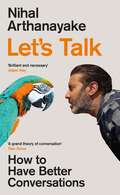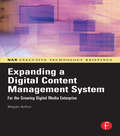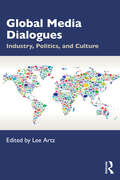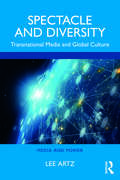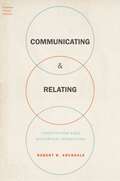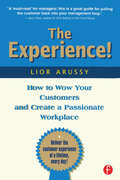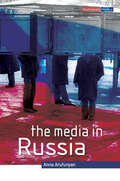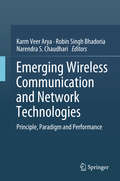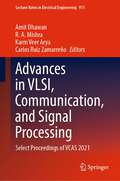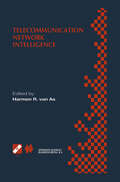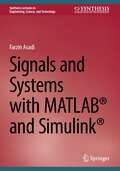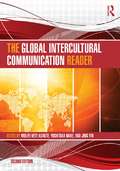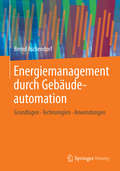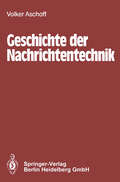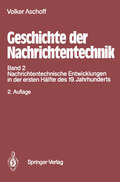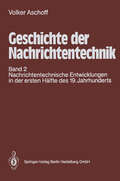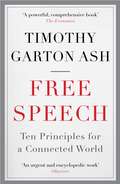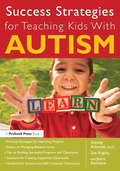- Table View
- List View
Let's Talk: How to Have Better Conversations
by Nihal Arthanayake'Read this fascinating book and you'll become a better listener, a better conversationalist and better company' Adam Kay'A brilliant book on the art of conversation' Matt Haig'A compulsory book for these divided times' Sathnam Sanghera'An intriguing exploration of the importance of a proper chinwag' Sara Cox'A terrific book from a terrific broadcaster. Worryingly good'' Jeremy Vine'An insightful, important read' Stacey Dooley'A genuinely brilliant broadcaster' Matthew Syed'A masterly book' Matthew d'Ancona 'Brilliant in the year and just as brilliant on the page' Anita Anand 'Fascinating and thought-provoking' Jane Fallon'Informed, open-minded, fair, astute, caring and funny' Ricky Gervais 'A grand theory of conversation' Dan Snow'The conversation king' Laura Whitmore...How do you talk to someone who doesn't want to talk to you?What happens in the brain when we're having a good conversation?What have smartphones done to how we connect?Conversations are broken. And while effective dialogue is supposed to lead to greater fulfilment in our personal and professional lives, all the scientific evidence points towards us sharing fewer interactions than previous generations. From ever decreasing face-to-face meetings to echo chambers online, we no longer have the necessary tools to talk to each other.Nihal Arthanayake is bucking this trend. As the world becomes increasingly more fractured, he has built a platform of 1.2 million listeners a week on BBC Radio 5 Live who regard him as one of the best people of his generation at having public conversations. Guests from the world's biggest stars to leaders of inner-city gangs have lauded his seemingly innate ability to stimulate positive discussions without the need for confrontation. Now he wants to understand how he developed his skills, what it exactly means to have a 'great conversation' and, most importantly, how he can teach us to have better interactions in our everyday lives.Let's Talk blends Nihal's experiences as an acclaimed interviewer with expert and celebrity opinion on the secrets and psychology behind successful communication. From tracing the evolution of dialogue to discovering what lights up in the brain when we're enjoying a good discussion, Nihal speaks to conversational authorities including Lorraine Kelly, former president of Ireland Mary McAleese, Professor Tanya Byron, internationally bestselling author Johann Hari, Matthew Syed, and many more, to find out why good conversation has eroded over time and how we can fix it.Part how-to and part manifesto, Let's Talk is Nihal's accessible, anecdotal and invigorating toolkit to having better conversations with anyone, any time.
Expanding a Digital Content Management System: for the Growing Digital Media Enterprise (Nab Executive Technology Briefings Ser.)
by Magan H. ArthurBuilding large integrated content management systems is a daunting task and there is little guidance for the implementation process for the mid-level manager. There are thousands of home grown or old standalone systems in need of upgrading and expanding to keep up with the growing challenge of digital media. This book allows the non-technical executive to understand the key concepts and issues. It covers the technical process and business aspects of expanding a system.
Expanding a Digital Content Management System: for the Growing Digital Media Enterprise
by Magan H. ArthurBuilding large integrated content management systems is a daunting task and there is little guidance for the implementation process for the mid-level manager. There are thousands of home grown or old standalone systems in need of upgrading and expanding to keep up with the growing challenge of digital media. This book allows the non-technical executive to understand the key concepts and issues. It covers the technical process and business aspects of expanding a system.
Global Media Dialogues: Industry, Politics, and Culture
by Lee ArtzThis book, the first of its kind, brings together leading scholars from multiple perspectives in a serious dialogue about continuity and change in global media production and content. Looking at a wide swath of the world, these authors show the emergence of transnational collaboration in global television and film production across national borders that seem to transcend national cultures and identities. At the same time, traditional class analysis of such phenomena is reframed within the rise of myriad social movements for equality, democracy, human rights, and defense of the environment. What are the effects of media, local or global? Does the West continue to dominate or is cultural imperialism waning? With original chapters written by leading scholars from a variety of disciplines, this book will appeal to students and scholars interested in global media communication, cultural studies, and international political economy.
Global Media Dialogues: Industry, Politics, and Culture
by Lee ArtzThis book, the first of its kind, brings together leading scholars from multiple perspectives in a serious dialogue about continuity and change in global media production and content. Looking at a wide swath of the world, these authors show the emergence of transnational collaboration in global television and film production across national borders that seem to transcend national cultures and identities. At the same time, traditional class analysis of such phenomena is reframed within the rise of myriad social movements for equality, democracy, human rights, and defense of the environment. What are the effects of media, local or global? Does the West continue to dominate or is cultural imperialism waning? With original chapters written by leading scholars from a variety of disciplines, this book will appeal to students and scholars interested in global media communication, cultural studies, and international political economy.
Spectacle and Diversity: Transnational Media and Global Culture (ISSN)
by Lee ArtzThis book shows how transnational media operate in the contemporary world and what their impact is on film, television, and the larger global culture. Where a company is based geographically no longer determines its outreach or output. As media consolidate and partner across national and cultural boundaries, global culture evolves. The new transnational media industry is universal in its operation, function, and social impact. It reflects a shared transnational culture of consumerism, authoritarianism, cultural diversity, and spectacle. From Wolf Warriors and Sanju to Valerian: City of 1000 Planets and Pokémon, new media combinations challenge old assumptions about cultural imperialism and reflect cross-boundary collaboration as well as boundary-breaking cultural interpretation. Intended for students of global studies and international communication at all levels, the book will appeal to a wide range of readers interested in the way transnational media work and how that shapes our culture.
Spectacle and Diversity: Transnational Media and Global Culture (ISSN)
by Lee ArtzThis book shows how transnational media operate in the contemporary world and what their impact is on film, television, and the larger global culture. Where a company is based geographically no longer determines its outreach or output. As media consolidate and partner across national and cultural boundaries, global culture evolves. The new transnational media industry is universal in its operation, function, and social impact. It reflects a shared transnational culture of consumerism, authoritarianism, cultural diversity, and spectacle. From Wolf Warriors and Sanju to Valerian: City of 1000 Planets and Pokémon, new media combinations challenge old assumptions about cultural imperialism and reflect cross-boundary collaboration as well as boundary-breaking cultural interpretation. Intended for students of global studies and international communication at all levels, the book will appeal to a wide range of readers interested in the way transnational media work and how that shapes our culture.
Communicating & Relating: Constituting Face in Everyday Interacting (Foundations of Human Interaction)
by Robert B. ArundaleCommunicating & Relating offers an account of how relating with one another emerges in communicating in everyday interacting. Prior work has indicated that human relationships arise in human communicating, and some studies have made arguments for why that is the case. Communicating & Relating moves beyond this work to offer an account of how both relating and face emerge in everyday talk and conduct: what comprises human communicating, what defines human social systems, how the social and the individual are linked in human life, and what comprises human relating and face. Part 1 develops the Conjoint Co-constituting Model of Communicating to address the question "How do participants constitute turns, actions, and meanings in everyday interacting?" Part 2 argues that the processes of constituting what is known cross-culturally as "face" are the processes of constituting relating, and develops Face Constituting Theory to address the question "How do participants constitute relating in everyday interacting?" The answers to both questions are grounded in evidence from everyday talk and conduct. Like other volumes in the Foundations of Human Interaction series, Communicating & Relating offers new perspectives and new research on communicative interaction and on human relationships as key elements of human sociality.
Communicating & Relating: Constituting Face in Everyday Interacting (Foundations of Human Interaction)
by Robert B. ArundaleCommunicating & Relating offers an account of how relating with one another emerges in communicating in everyday interacting. Prior work has indicated that human relationships arise in human communicating, and some studies have made arguments for why that is the case. Communicating & Relating moves beyond this work to offer an account of how both relating and face emerge in everyday talk and conduct: what comprises human communicating, what defines human social systems, how the social and the individual are linked in human life, and what comprises human relating and face. Part 1 develops the Conjoint Co-constituting Model of Communicating to address the question "How do participants constitute turns, actions, and meanings in everyday interacting?" Part 2 argues that the processes of constituting what is known cross-culturally as "face" are the processes of constituting relating, and develops Face Constituting Theory to address the question "How do participants constitute relating in everyday interacting?" The answers to both questions are grounded in evidence from everyday talk and conduct. Like other volumes in the Foundations of Human Interaction series, Communicating & Relating offers new perspectives and new research on communicative interaction and on human relationships as key elements of human sociality.
The Experience: How to Wow Your Customers and Create a Passionate Workplace
by Lior ArussyA 'must-read' for managers; this is a great guide for pulling the customer back into your management loop.' — Jerry Vass, author of Soft Selling in the Hard World 'Lior Arussy spins a cautionary tale for the transition companies m
The Media in Russia (UK Higher Education OUP Humanities & Social Sciences Media, Film & Cultural Studies)
by Anna ArutunyanThis book introduces readers to the Russian media, its current landscape, and its history by outlining the chief challenges faced by Russian journalists on their quest for media freedom. Focusing on how the Government has traditionally controlled the media through censorship, financial involvement, and relations between media moguls and the State, the book analyses to what extent the Russian media has become 'free' since the fall of Communism. The author questions whether freedom is possible at all in a society where the media has traditionally been so closely linked to the State.There are chapters on different forms of media including print, television, radio and the Internet. Each chapter identifies the main hurdles faced by the particular medium and considers the potential it has for becoming truly independent. Key features include:Vivid examples and case studies of the power play between television and the State during the tumultuous 1990sClear outline of various different forms of media Comprehensive historical overview supported with examples from relevant publications Drawing on her own experience as a professional journalist, the author, provides a first hand account of what journalists in Russia are encountering today. This position allows the author to frankly discuss the tangible issues that impact those involved in the media and their audiences.By providing both a description of the current situation and an overview of Russian media history, The Media in Russia offers a unique introduction to the field and is key reading for students across various disciplines including Russian studies, media studies and politics.
Language Function: An Introduction to Pragmatic Assessment and Intervention for Higher Order Thinking and Better Literacy
by Ellyn ArwoodDr. Arwood outlines a revolutionary four-tiered model of how learners acquire language, and suggests ways to impose visual language functions onto an auditory language like English in order to improve learning for both neurotypical learners and those with neurogenic disabilities.
Emerging Wireless Communication and Network Technologies: Principle, Paradigm and Performance
by Karm Veer Arya Robin Singh Bhadoria Narendra S. ChaudhariThe book covers a wide range of wireless communication and network technologies, and will help readers understand the role of wireless technologies in applications touching on various spheres of human life, e.g. healthcare, agriculture, building smart cities, forecasting and the manufacturing industry.The book begins by discussing advances in wireless communication, including emerging trends and research directions for network technologies. It also highlights the importance of and need to actively develop these technologies. In turn, the book addresses different algorithms and methodologies which could be beneficial in implementing 5G Mobile Communication, Vehicular Ad-hoc Networks (VANET), Reliable Cooperative Networks, Delay Tolerant Networks (DTN) and many more contexts related to advanced communications. It then addresses the prominence of wireless communication in connection with the Internet of Things (IoT), Mobile Opportunistic Networks and Cognitive Radio Networks (CRN). Lastly, it presents the new horizons in architecture and building protocols for Li-Fi (Light-Fidelity) and Wearable Sensor Technology.
Advances in VLSI, Communication, and Signal Processing: Select Proceedings of VCAS 2021 (Lecture Notes in Electrical Engineering #911)
by Karm Veer Arya Amit Dhawan R. A. Mishra Carlos Ruiz ZamarreñoThis book comprises select peer-reviewed proceedings of the International Conference on VLSI, Communication and Signal processing (VCAS 2021). The contents focus on the latest research in different domains of electronics and communication engineering, in particular microelectronics and VLSI design, communication systems and networks, and signal and image processing. The book discusses the emerging applications of novel tools and techniques in image, video, and multimedia signal processing. This book will be useful to students, researchers, and professionals working in electronics and communication.
Telecommunication Network Intelligence: IFIP TC6/WG6.7 Sixth International Conference on Intelligence in Networks (SmartNet 2000), September 18–22, 2000, Vienna, Austria (IFIP Advances in Information and Communication Technology #50)
by Harmen R. Van AsTelecommunication Network Intelligence is a state-of-the-art book that deals with issues related to the development, distribution, and management of intelligent capabilities and services in telecommunication networks. The book contains recent results of research and development in the following areas, among others: Platforms for Advanced Services; Active and Programmable Networks; Network Security, Intelligence, and Monitoring; Quality-of-Service Management; Mobile Agents; Dynamic Switching and Network Control; Services in Wireless Networks; Infrastructure for Flexible Services. Telecommunication Network Intelligence comprises the proceedings of SmartNet 2000, the Sixth International Conference on Intelligence in Networks, which was sponsored by the International Federation for Information Processing (IFIP) and held at the Vienna University of Technology, Vienna, Austria, in September 2000.
Signals and Systems with MATLAB® and Simulink® (Synthesis Lectures on Engineering, Science, and Technology)
by Farzin AsadiThis textbook provides a compact but comprehensive treatment that guides students to solve Signals and Systems problems using MATLAB®/Simulink®. Ideal as a hands-on source for courses in Signals and Systems or Control Systems, this text focuses on solving problems using market-standard software, corresponding to all key concepts covered in the classroom. The author uses his extensive classroom experience to guide students toward deeper understanding of key concepts, while they gain facility with software they will need to master for later studies and practical use in their engineering careers.
The Global Intercultural Communication Reader
by Molefi Kete Asante Yoshitaka Miike Jing YinThe Global Intercultural Communication Reader is the first anthology to take a distinctly non-Eurocentric approach to the study of culture and communication. In this expanded second edition, editors Molefi Kete Asante, Yoshitaka Miike, and Jing Yin bring together thirty-two essential readings for students of cross-cultural, intercultural, and international communication. This stand-out collection aims to broaden and deepen the scope of the field by placing an emphasis on diversity, including work from authors across the globe examining the processes and politics of intercultural communication from critical, historical, and indigenous perspectives. The collection covers a wide range of topics: the emergence and evolution of the field; issues and challenges in cross-cultural and intercultural inquiry; cultural wisdom and communication practices in context; identity and intercultural competence in a multicultural society; the effects of globalization; and ethical considerations. Many readings first appeared outside the mainstream Western academy and offer diverse theoretical lenses on culture and communication practices in the world community. Organized into five themed sections for easy classroom use, The Global Intercultural Communication Reader includes a detailed bibliography that will be a crucial resource for today's students of intercultural communication.
The Global Intercultural Communication Reader
by Molefi Kete Asante Yoshitaka Miike Jing YinThe Global Intercultural Communication Reader is the first anthology to take a distinctly non-Eurocentric approach to the study of culture and communication. In this expanded second edition, editors Molefi Kete Asante, Yoshitaka Miike, and Jing Yin bring together thirty-two essential readings for students of cross-cultural, intercultural, and international communication. This stand-out collection aims to broaden and deepen the scope of the field by placing an emphasis on diversity, including work from authors across the globe examining the processes and politics of intercultural communication from critical, historical, and indigenous perspectives. The collection covers a wide range of topics: the emergence and evolution of the field; issues and challenges in cross-cultural and intercultural inquiry; cultural wisdom and communication practices in context; identity and intercultural competence in a multicultural society; the effects of globalization; and ethical considerations. Many readings first appeared outside the mainstream Western academy and offer diverse theoretical lenses on culture and communication practices in the world community. Organized into five themed sections for easy classroom use, The Global Intercultural Communication Reader includes a detailed bibliography that will be a crucial resource for today's students of intercultural communication.
Energiemanagement durch Gebäudeautomation: Grundlagen - Technologien - Anwendungen
by Bernd AschendorfDie am Markt vorhandenen Bücher betrachten lediglich den Einsatz einzelner Gebäudebussysteme, nicht jedoch den Vergleich untereinander mit Bezug auf Kosten/Nutzen und Anwendbarkeit. In diesem Buch werden verschiedene Gebäudebussysteme, wie z.B. Funkbussysteme, PEHA-PHC, OBO-Bus, EIB, LCN, LON, SPS-Systeme, etc. auf deren Einsatzmöglichkeit in den verschiedenen Gebäudekategorien untersucht. Der Vergleich bezieht sich auf alle Ebenen der Automatisierungsebene vom Feldbus über die Automatisierung bis zur Leitebene.
Geschichte der Nachrichtentechnik: Beiträge zur Geschichte der Nachrichtentechnik von ihren Anfängen bis zum Ende des 18. Jahrhunderts
by Volker AschoffAls der Verfasser in den letzten Jahren vor seiner Emeritierung eine Wahlvorlesung über die frühe Geschichte der Nachrichtentechnik an kündigte, war die Resonanz bei den Studierenden rein zahlenmäßig nicht sehr groß. Ganz im Gegensatz dazu stand das lebendige Inter esse derjenigen, die diese Vorlesung nicht nur belegten, sondern sie auch für die Dauer von jeweils zwei Semestern von Anfang bis Ende besuchten. In vielen Einzelgesprächen, die sich im Anschluß an die Vorlesungen und während der Abschlußprüfungen ergaben, wurde von diesen Studenten immer Wieder der Wunsch geäußert, den Inhalt der Vorlesung als Buch zu veröffentlichen. Die Bitte zu erfüllen, schien dem Verfasser allerdings nur dann gerecht fertigt, wenn zwei wichtige Ziele angestrebt werden konnten, näm lich 1) die Geschichte dieses Teilgebietes der Technik aus den ursprüng lichen Quellen zu entwickeln, und 2) das, was in diesen Quellen zu finden ist, im Rahmen der jeweils zeitgenössischen Gegebenheiten (technische Realisierbarkeit, Be darfslage) zu interpretieren. Nur wenn diese beiden Bedingungen erfüllt werden, kann ein gerade in der Historiographie der Nachrichtentechnik häufig zu beobachtender Fehler vermieden werden, der daraus entsteht, daß - meist wohl ganz unbewußt - die Kenntnis von dem Stand der Technik der eigenen Zeit die Interpretation weit zurückliegender Vorschläge oder Berichte zur Lösung nachrichtentechnischer Aufgaben beeinflußt.
Geschichte der Nachrichtentechnik: Band 1 Beiträge zur Geschichte der Nachrichtentechnik von ihren Anfängen bis zum Ende des 18. Jahrhunderts
by Volker AschoffGeschichte der Nachrichtentechnik: Band 2 Nachrichtentechnische Entwicklungen in der ersten Hälfte des 19. Jahrhunderts
by Volker AschoffDie Geschichte der Nachrichtentechnik, dargestellt in Band 1 von den Anfängen im Altertum bis zum Ende des 18. Jahrhunderts, wird hiermit fortgeführt und behandelt die stürmische Entwicklung, in der mit dem Galvanismus und dem Elektromagnetismus die wesentlichen Grundlagen für die "elektrische Nachrichtentechnik" gelegt wurden. Dargestellt wird weniger wann bzw. wer welche Entwicklung einleitete, vielmehr konzentriert sich der Autor auf die Frage, warum sich spezielle Entwicklungen im historischen Umfeld unter Berücksichtigung politischer, wirtschaftlicher und gesellschaftlicher Faktoren durchsetzten. Der Autor schildert die beteiligten Personen und ihre Zeit unter Rückgriff auf die zeitgenössische Literatur so interessant, daß auch größere Leserkreise angesprochen sind.
Geschichte der Nachrichtentechnik: Band 2: Nachrichtentechnische Entwicklungen in der ersten Hälfte des 19. Jahrhunderts
by Volker AschoffDie Geschichte der Nachrichtentechnik, dargestellt in Band 1 von den Anfängen im Altertum bis zum Ende des 18. Jahrhunderts, wird hiermit fortgeführt und behandelt die stürmische Entwicklung, in der mit dem Galvanismus und dem Elektromagnetismus die wesentlichen Grundlagen für die "elektrische Nachrichtentechnik" gelegt wurden. Dargestellt wird weniger wann bzw. wer welche Entwicklung einleitete, vielmehr konzentriert sich der Autor auf die Frage, warum sich spezielle Entwicklungen im historischen Umfeld unter Berücksichtigung politischer, wirtschaftlicher und gesellschaftlicher Faktoren durchsetzten. Der Autor schildert die beteiligten Personen und ihre Zeit unter Rückgriff auf die zeitgenössische Literatur so interessant, daß auch größere Leserkreise angesprochen sind
Free Speech: Ten Principles for a Connected World
by Timothy Garton AshWINNER OF THE 2017 AL-RODHAN PRIZENever in human history was there such a chance for freedom of expression. If we have Internet access, any one of us can publish almost anything we like and potentially reach an audience of millions. Never was there a time when the evils of unlimited speech flowed so easily across frontiers: violent intimidation, gross violations of privacy, tidal waves of abuse. A pastor burns a Koran in Florida and UN officials die in Afghanistan.Drawing on a lifetime of writing about dictatorships and dissidents, Timothy Garton Ash argues that in this connected world that he calls cosmopolis, the way to combine freedom and diversity is to have more but also better free speech. Across all cultural divides we must strive to agree on how we disagree. He draws on a thirteen-language global online project - freespeechdebate.com - conducted out of Oxford University and devoted to doing just that.With vivid examples, from his personal experience of China's Orwellian censorship apparatus to the controversy around Charlie Hebdo to a very English court case involving food writer Nigella Lawson, he proposes a framework for civilized conflict in a world where we are all becoming neighbours.Particularly timely. . . Garton Ash argues forcefully that. . . there is an increasing need for freer speech. . . A powerful, comprehensive book - The Economist
Success Strategies for Teaching Kids With Autism
by Wendy Ashcroft Sue Argiro Joyce KeohaneAlthough an abundance of research exists on working with students with autism, teachers need the practical strategies in Success Strategies for Teaching Kids With Autism to build successful programs and services for kids with autism.The authors, seasoned classroom teachers and consultants for a large public school autism support program, look at ways teachers can apply best practices for teaching special needs students. They offer field-tested ideas for teachers to implement, covering topics such as managing difficult behaviors, teaching social skills, addressing communication difficulties, creating schedules, and organizing the classroom.The book includes a detailed section on using applied behavior analysis, providing practical examples for teachers to employ in their own classrooms in order to modify student behaviors and increase learning. Including teacher-friendly overviews of the educational needs of students with autism and ideal teaching methods, the book also provides reproducible materials and photographs that show the strategies in action.
